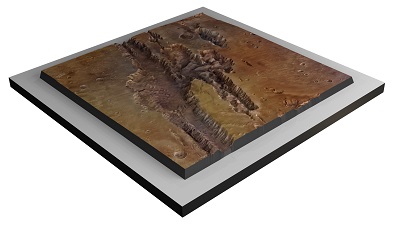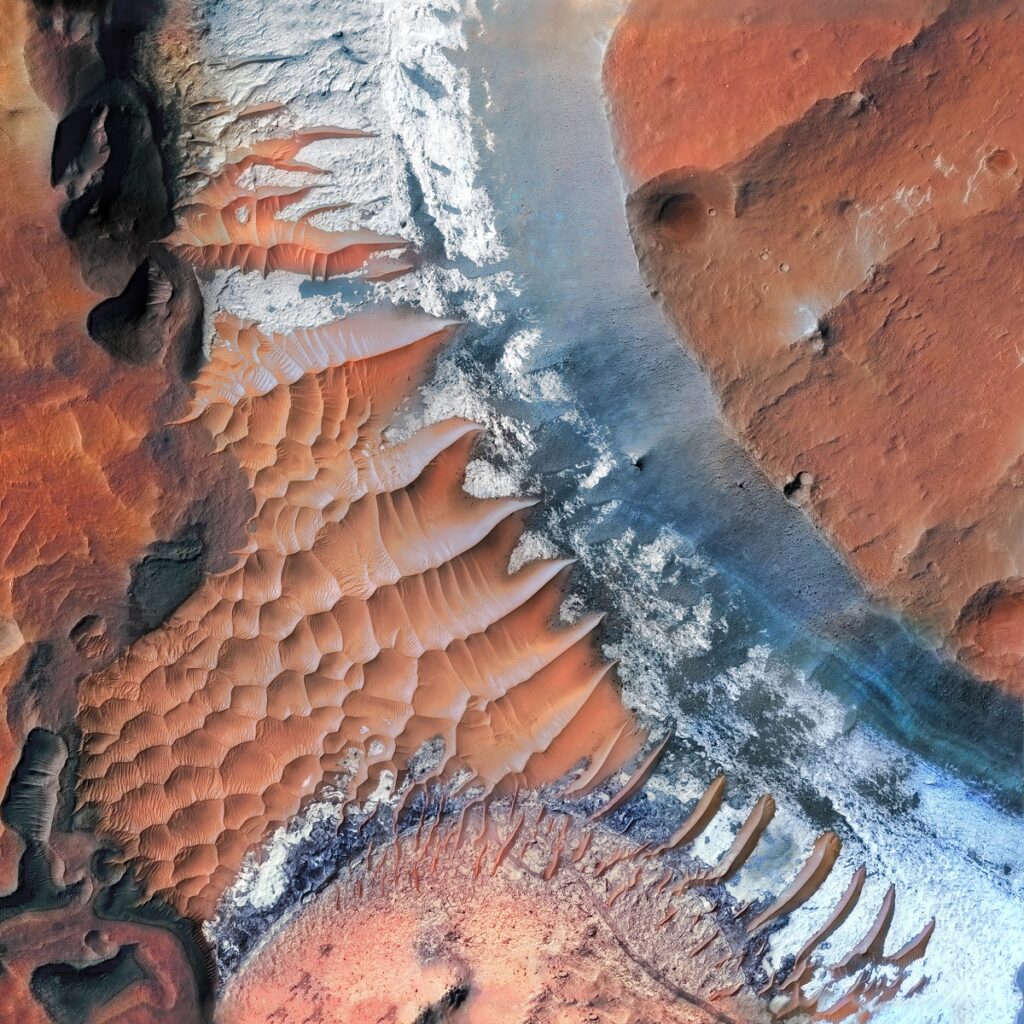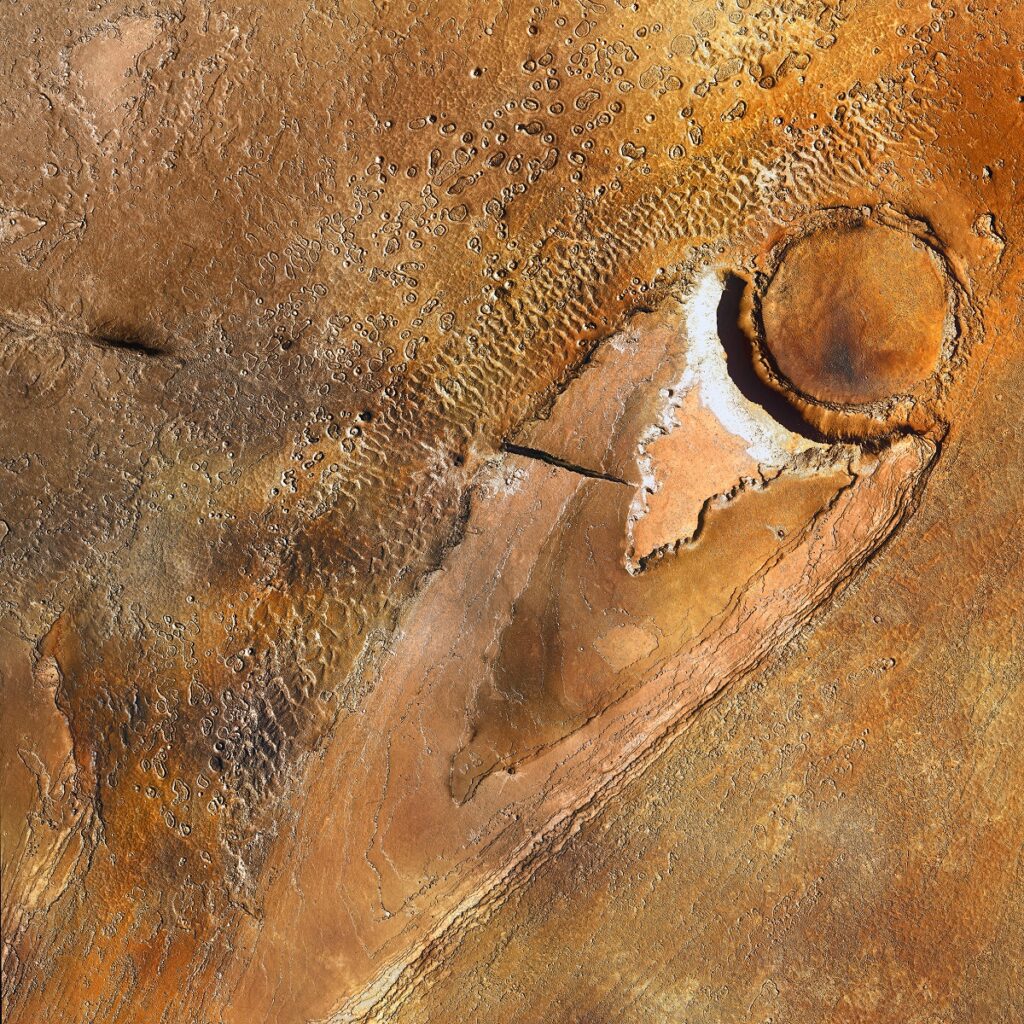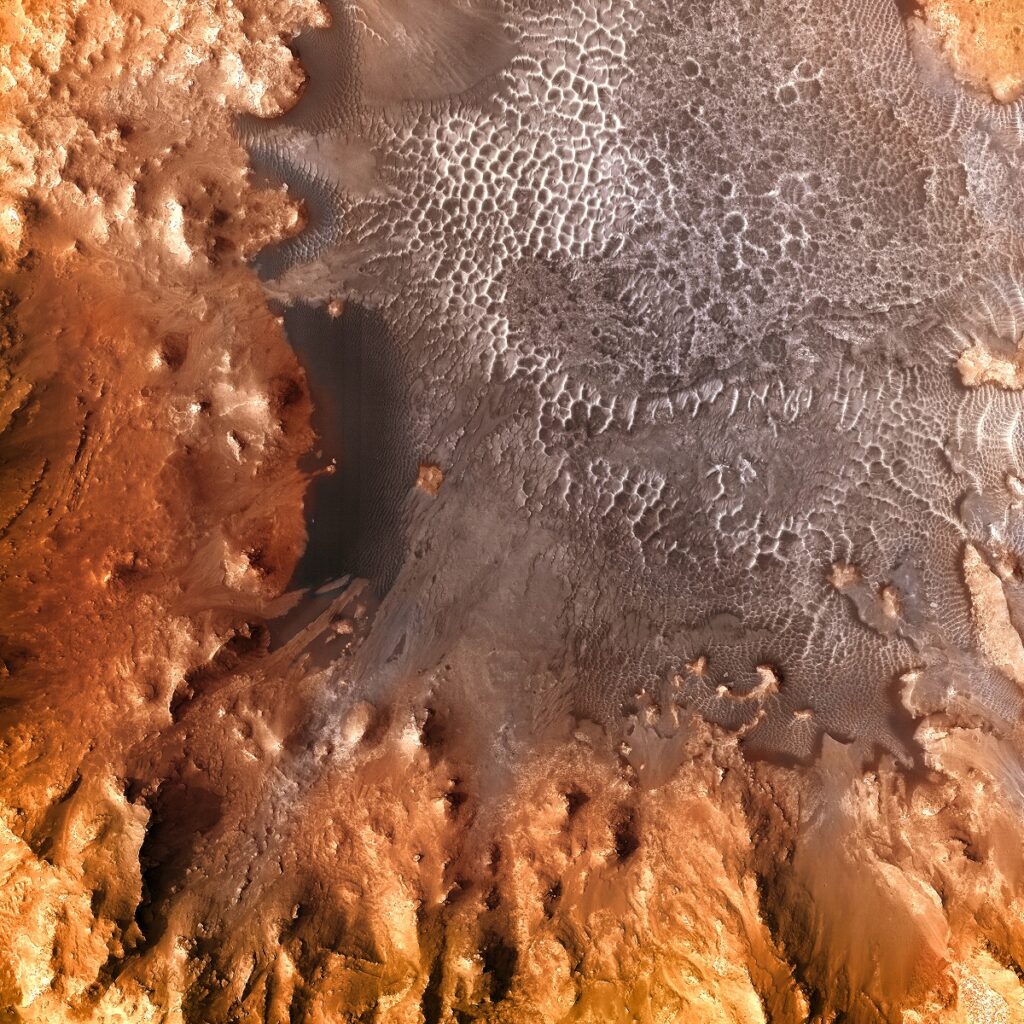How Long Does it Take to get to Mars?
How Long Does it Take to get to Mars?
WhiteClouds Builds 3D Marscapes and Canvas Prints
Did you know we make
custom
8K Mars Canvas Prints

and
3D Marscapes

How Long Does it Take to get to Mars?
The time it takes to get to Mars from Earth depends on a variety of factors including the planets’ positions in their orbits, the specific details of the mission’s trajectory, and the type of propulsion used. The distance between Earth and Mars changes throughout the year as both planets have elliptical orbits and different orbital periods, with the closest approach, or opposition, occurring approximately every 26 months. At opposition, Mars and the Sun are on directly opposite sides of Earth.
Hohmann Transfer Orbit
Traditionally, missions to Mars have used a Hohmann Transfer Orbit, which is the most energy-efficient way to travel between two orbiting bodies, but it is not the fastest. Using this method, it typically takes approximately 9 months to travel to Mars. This is the method that has been used by most Mars rovers and orbiters.
Faster Transits
Advanced propulsion technologies and mission designs are in development that could potentially shorten travel time to Mars. For example, using high-powered ion propulsion systems, nuclear thermal propulsion, or solar sails, could reduce travel time to a matter of months or even weeks. However, these technologies are still largely in the experimental or developmental stage.
Recent Missions
- NASA’s Mars rovers, such as Curiosity, took about 9 months to travel from Earth to Mars.
- The UAE’s Hope Probe, launched in July 2020, reached Mars in February 2021, also taking around 7 months.
Human Missions
When considering manned missions, the challenges and travel times can be different, given the requirements for life support and the need to bring humans back to Earth. Various proposals and mission designs for human missions to Mars estimate travel times ranging from 6 to 9 months using current or near-future technologies.
Speed and Distance
The speed of the spacecraft also greatly affects the travel time, and the required speed depends on the chosen trajectory. he shortest distance between Earth and Mars (during opposition) is about 54.6 million kilometers, but spacecraft typically travel a much longer distance due to the need to follow a trajectory that requires the least amount of energy, typically an elliptical orbit.
Future Innovations
Space agencies and private companies are actively researching and developing new technologies and mission architectures to decrease travel time to Mars, reduce mission costs, and ensure the safety of astronauts during potential future manned missions to the Red Planet.
In conclusion, while the time to get to Mars has typically been around 9 months using conventional propulsion technologies and optimal transfer orbits, future innovations in space travel technology have the potential to significantly decrease the travel time for future robotic and human missions to Mars.
Check out our 3D Mars Learning Center for more information on Mars. You can also learn more at: NASA Mars Exploration.
More About Mars
Contact us today to learn more about our 3D services and how we can help you achieve your goals.



